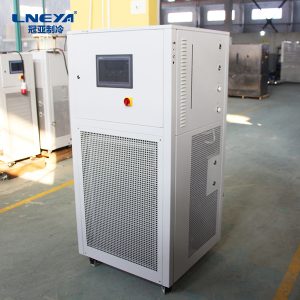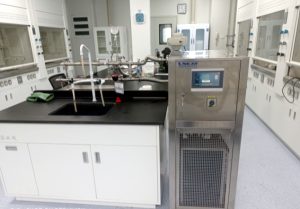How to Exhaust Air in the Industrial Chiller of Freon System?
Discharge operation steps in the industrial chiller in Freon system:
Close the outlet valve of the reservoir or condenser.
When the pressure of the low-pressure system drops to a stable vacuum state, the machine will stop.
Rotary loosen the by-pass screw plug of the exhaust cut-off valve. the exhaust valve stem makes the valve three-way by rotating half circle or so, making high pressure gas escape from the by-pass hole.
Use the palm of your hand to block the exhaust air. When the hand feels cool and there are oil marks on it, it means that the air has been basically exhausted, and the screw plug should be tightened, and the reverse exhaust valve stem should be rotated, and the bypass hole should be closed.
It should be noted that the time should not be too long, which can be carried out for 2 to 3 times in a row, in order to avoid wasting refrigerants. If the top of the condenser or reservoir is equipped with a spare stop valve, air can also be directly discharged from the valve.
Related recommendations
-
Low temperature heating control chip and other detection methods
1167With the research and development of chip technology, chip detection technology is also maturing. LNEYA's low-temperature heating control chip technology is applied in chip detection. In addition to this type of detection technology, there are oth...
View details -
Application of Laboratory Heating and Refrigeration Equipment
891Refrigeration Heating Equipment use in Labotrtory
View details -
Test instructions for refrigeration heating temperature control system for fuel oil test
1205The refrigeration heating temperature control system can be tested for different projects during operation. The detection of different projects is different. Among them, the refrigeration heating temperature control system for fuel oil testing is ...
View details -
10L reactor temperature control equipment
84710L reactor temperature control equipment, also known as oil bath machine, is a device used to accurately control the temperature in the reactor, usually through heat transfer oil (also known as heat transfer fluid) to achieve heating an...
View details
 LNEYA Industrial Chillers Manufacturer Supplier
LNEYA Industrial Chillers Manufacturer Supplier













